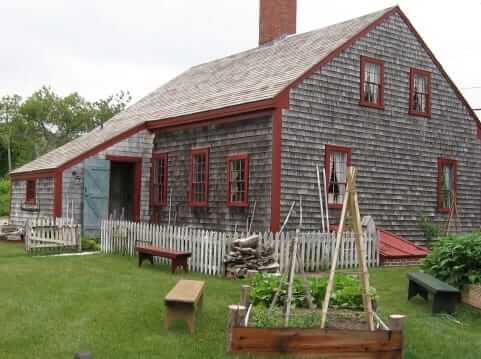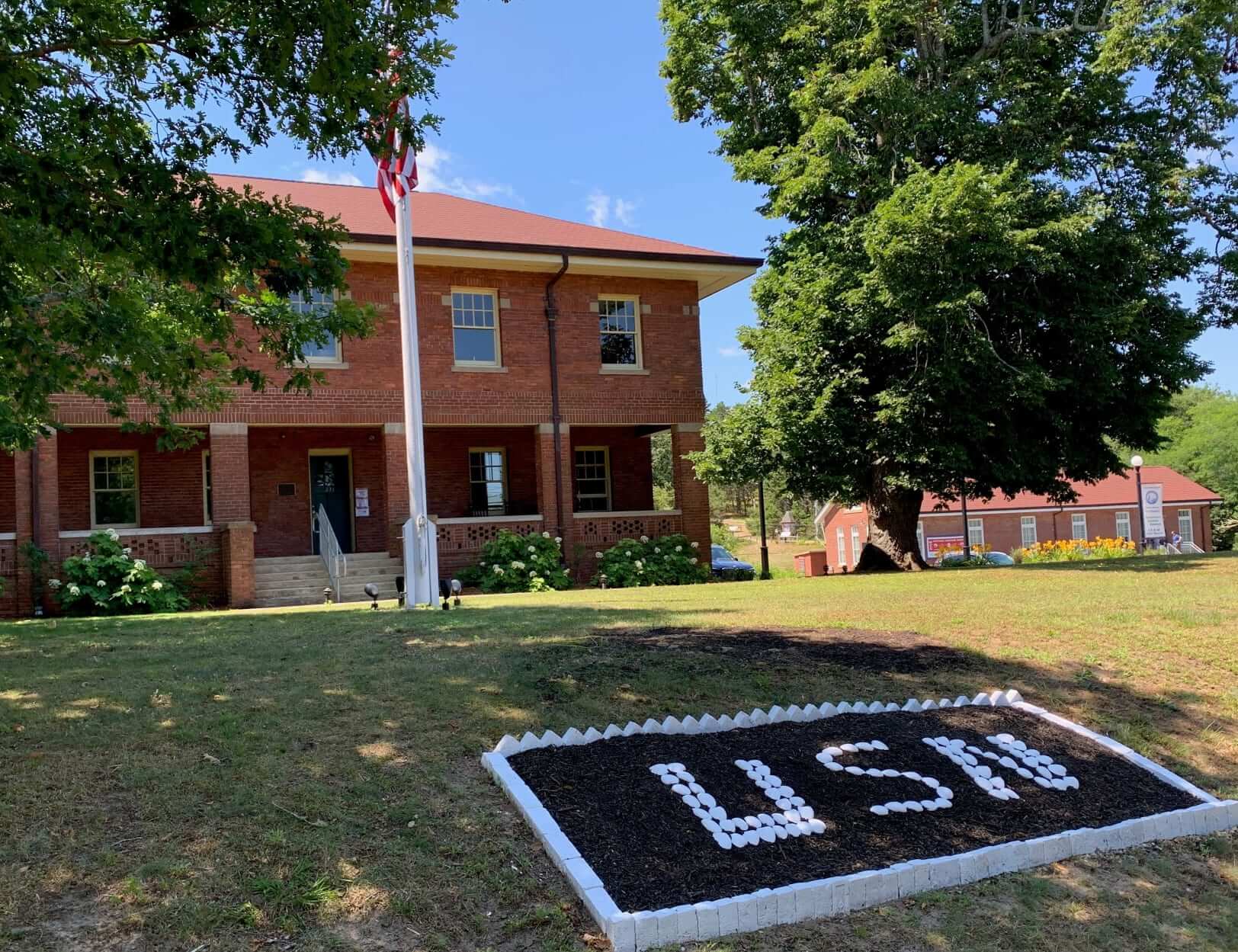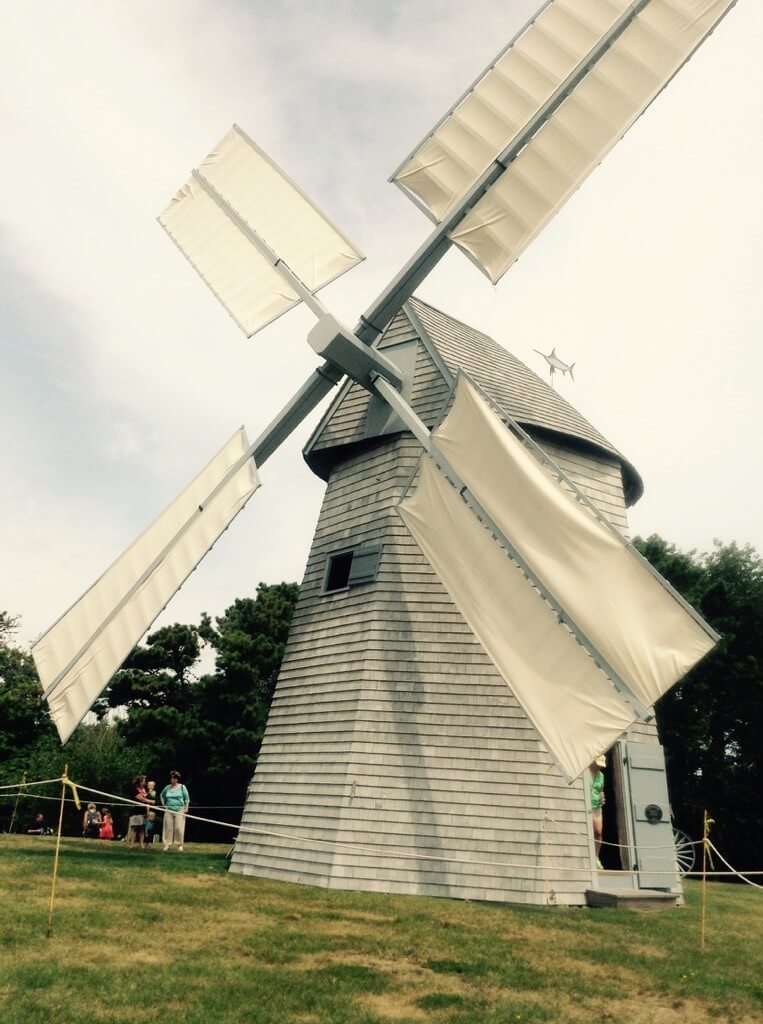




Atwood Museum
Owned and operated by the Chatham Historical Society, the Atwood Museum is located at 347 Stage Harbor Road. The original part of the museum is a house built in the 1750s by sea captain Joseph Atwood when he was a subject of George II of England. The house was occupied by the Atwood family until 1923, before the Historical Society acquired it in 1925. As such, it has remained almost entirely unchanged since the time it was built. The house provides an excellent view into the way of life during the 18th and 19th centuries in New England.
Over time, several wings have been added to the original structure, with the latest expansion constructed between 2003 and 2005. Today there are twelve spacious galleries featuring art, artifacts, maps, charts, and decorative arts portraying life on Cape Cod since the 17th century.
The museum is displaying two new exhibits in 2023: Land Ho!: Chatham: A Fishing and Shipping Community and History and Beyond: 1923-2023.
Land Ho! tells the story of the shipping and fishing industries in Chatham through a series of beautiful handmade ship models. See these wonderful creations prominently displayed, and learn how seafaring tradition shaped the culture and economy of Cape Cod.
Our new exhibit History and Beyond: 1923-2023, sponsored by the Kemper Family Foundation, celebrates the Centennial of the Historical Society. Through a series of 5 vignettes, History and Beyond recognizes the women who founded the Society, explains the shifting realities of Chatham in 1923, shows the value of preserving local history, and much more.
The museum will also debut a brand new Multimedia and Education Center this season. Visitors can enjoy educational films about Chatham history, including the debut of a brand new documentary about Alice Stallknecht. Two workstations for independent research are also available for anyone curious about the museum’s collection or Cape Cod history.
Two of 2022’s exhibits will be returning for this season. Weird, Wacky, Wonderful, our museum’s own “cabinet of curiosities,” displays some of the unique objects that have come into the Chatham Historical Society’s collection over the last hundred years. Alice Stallknecht: Beyond the Murals educates visitors about local artist Alice Stallknecht, whose paintings adorn our Mural Barn. This exhibit shows off her smaller, more whimsical works and provides fascinating insight into her life in Chatham, her family, her influences, and her art.
Back by popular demand is The Rescue of the Pendleton, which highlights the crew of the famed CG 36500 in their daring rescue on February 18, 1952. Another gallery is devoted to antique tools and trades in Chatham, including cranberry growing, salt works and more.
One highlight of the museum is the Mural Barn that houses the nationally renowned portraits of 130 townspeople painted by Alice Stallknecht between 1932 – 1945 and capturing the life and struggles of local residents during that period.
On the grounds is the preserved Nickerson North Beach Camp. Built in 1947, the structure was moved, with all of the contents intact, to save it from being washed into the sea as the beach eroded. Also, be sure to check out the working lighthouse lantern of one of Chatham’s famed twin lights, together with its original Fresnel lens. Visitors can also explore a recreated Wetu—a traditional Wampanoag dwelling.
Hundreds of interesting antiques are displayed throughout the museum, providing something for all art lovers, history buffs, students and friends of Chatham and Cape Cod, regardless of age. Don’t forget to visit our gift shop, which is stocked with items and books relating to the museums’ collections.
As stewards of the region’s history and culture, the Chatham Historical Society strives to educate, inform and enlighten the public and bring enthusiasm to the Cape Cod community. The Atwood Museum exhibits are open from May to October with special festive happenings during the holidays. The research library and special programs including a monthly lecture series are available year round. For schedules and information, visit the museum website at www.chathamhistoricalsociety.org or call (508) 945-2493.
Caleb Nickerson Homestead
Chatham’s c. 1829 Caleb Nickerson Homestead, on the campus of the Nickerson Family Association, 1107 Orleans Road (Route 28), North Chatham, is open for tours on Wednesdays from 9 a.m. to 1 p.m. June through September. Donations are accepted. Special ticketed gardening events and teas will be scheduled throughout the summer.
Experience Colonial life in the Caleb Nickerson Homestead, an antique full Cape featuring a beehive oven, period woodwork and a Colonial “dooryard” vegetable and herb garden. Stop by and see what is growing and ready to pick in Caleb’s garden.
Caleb Nickerson, a seventh generation descendant of William and Anne (Busby) Nickerson, built this house on Stage Neck Road in about1829 for his wife Priscilla (Eldredge) and their family. The house stood on a bluff overlooking the Oyster River for 174 years until, in 2003, the house journeyed by land and sea to its present location. The pristine house features three working fireplaces and a beehive oven, original iron cranes, period woodwork and random-width pine floors. The Caleb Homestead is open Wednesdays from 8 a.m. to 1 p.m. and by appointment. Also, this summer during the months of August and September, you can visit the archaeological excavation of William and Anne’s c. 1664 homestead. An archaeologist will be on hand to interpret the site of Chatham’s founders’ home from 9 a.m. to 3:30 p.m. weekdays.
For more information visit www.nickersonassoc.com, call 508-945-6086 or email wmnick1107@gmail.com.
Chatham's Godfrey Windmill
Chatham's Godfrey Windmill is located near Chase Park, off Shattuck place, just a short walk from the downtown Main Street. Built by Colonel Benjamin Godfrey in 1797, the Mill remains almost exactly as it was when it was grinding corn for early Chatham residents. It is a prime example of a post-Revolutionary War commercial venture that served the community for more than one-hundred years.
The Mill originally located overlooking Mill Pond was donated to the Town of Chatham by Mr. and Mrs. Stuart Crocker and moved to its present location in 1956. The Mill was restored for the 300th anniversary of the Town of Chatham in 2012. Today thousands of visitors visit the Mill during the summer season and walk in the steps of many who used the Mill to supply them with corn meal and local gossip. Learn the variety of common phrases that started at the grist mills. Throughout the season a variety of activities related to the Mill will be available for children and adults. www.chathamwindmill.com
Marconi - RCA Wireless Museum
The Marconi-RCA Wireless Museum of the Chatham Marconi Maritime Center is located at 847 Orleans Road (Route 28) across from Ryder’s Cove in North Chatham.
In 1914, radio pioneer Guglielmo Marconi’s company built a wireless receiving station here paired with a transmitting station in Marion, Massachusetts intended to provide commercial point-to-point radio service between the United States and Northern Europe. The campus of 10 original buildings on 11.3 acres has been preserved by the Town of Chatham as the Marconi-RCA National Register Historic District.
Following World War One and with the intervention of the US government, Marconi’s American assets were acquired by the newly formed Radio Corporation of America. By 1922 - a century ago - RCA’s Chatham station with call sign WCC was in full operation, but now for maritime ship-to-shore service. It would soon become the largest US coastal station in the marine service.
Through informative panels, videos and interactive exhibits, visitors to the museum’s Wireless History gallery explore radio pioneer Guglielmo Marconi’s life and legacy, the role of maritime radio in world events, ship-to-shore communication with the actual shipboard radio from the hospital ship SS Hope, and artifacts from Chatham Radio WCC’s history. Visitors experience firsthand how a radio operator touching a Morse code key in Chatham could be heard by his counterparts aboard ships sailing the seven seas, and learn about the talented and skilled people who conceived, built and operated the station. In addition to relaying commercial and personal messages to ships, WCC communicated with pioneer aviators including Charles Lindbergh, Amelia Earhart and Howard Hughes.
From 1942 through 1945, Chatham Radio played a key role in defeating Germany during the World War II Battle of the Atlantic by intercepting Enigma-encrypted wireless messages between the Third Reich’s headquarters and its ships at sea. “Station C” (its wartime US Navy designation) forwarded these intercepts to Washington, D.C. for decoding. As the control station for the East Coast direction-finding network, Station C also directed the search for telltale radio signals that allowed enemy vessels to be located and tracked. The museum’s Navy Years exhibit features working electronic Enigma cipher machine simulators allowing visitors to try their hand at message encryption.
The museum’s other gallery is truly “open space” and open year-round. This is the Antenna Field Trail, a winding path through the flora and fauna of Cape Cod with interpretive signs describing the station’s antennas, and offering views of the preserved 1914 station campus. Some of the antennas are scaled replicas of the originals, actively used by amateur radio operators to communicate around the world.
The museum and its Museum Shop are open most days from Memorial Day until Columbus Day and on weekends during the Spring and Fall. Interpretive lectures and presentations provide context for the museum’s exhibits, and the Center offers engaging science, technology, engineering & mathematics (STEM) classes for youth year-round. For information on museum hours, programs and events, Summer Science classes for kids, and ticketing please visit ChathamMarconi.org or call 508-945-8889.
Mayo House
Just east of the Cape Cod Five Cents Savings Bank building at 540 Main Street is the Mayo House, which is an excellent example of a traditional Cape Cod house built in 1820. This antique home serves as headquarters for the Chatham Conservation Foundation, and is used by the group for its regular meetings. The Mayo House, beautifully preserved and restored, was donated to the foundation by the Cape Cod Five Cents Savings Bank. It is furnished with period furniture and is open to the publicthree days a week from 1:00pm to 3:00pm during the summer months.
Chatham Railroad Museum
The Chatham Railroad Museum is located in the old Chatham Railroad Company station on Depot Road, and has parking space at the door. The building is now over 100 years old and on the original site. It served the Town for over fifty years from 1887 to 1937. In 1951, Mrs. Jacob Cox of Cleveland, Ohio and Chatham purchased the structure and land as a gift to our town. It was restored as a country depot and a museum in 1960.
The Chatham Railroad Museum opens Tuesday thru Saturday from 10:00am to 4:00pm mid-June through mid September. It is manned by an experienced group of volunteers from all Cape Cod. There have been over 100,000 visitors since the first season. It grows in size each year. The exhibits, starting with a relic of the first commercial railroad in the U.S. in 1826, include hundreds of factors of historical significance in the railroad field, plus models and objects which never fail to interest the visitors.
The 100-year old caboose of olden days, the gift of the New York Central System, has been fully restored and is open for all to enjoy the sounds of the rails. Young and old will enjoy the trip through this Home on Wheels of the railroad train crews. The diorama of the Chatham yards of about 1915 modeled in a scale of 1/8 inch to the foot is a new acquisition - a must see exhibit. Museum can be opened after season closing for groups by special arrangements. Donations are accepted. Handicapped accessible.
